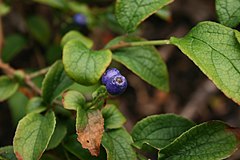Symplocos
| Symplocos subsp. var. | ||||||||||||||||||||||||||||||||||||||||||||||||||||||||
|---|---|---|---|---|---|---|---|---|---|---|---|---|---|---|---|---|---|---|---|---|---|---|---|---|---|---|---|---|---|---|---|---|---|---|---|---|---|---|---|---|---|---|---|---|---|---|---|---|---|---|---|---|---|---|---|---|

|
|
| ||||||||||||||||||||||||||||||||||||||||||||||||||||||
| ||||||||||||||||||||||||||||||||||||||||||||||||||||||||
Symplocos is a genus of flowering plants in the order Ericales, containing about 250 species native to Asia, Australia and the Americas.
Symplocos species are used as food plants by the larvae of some Lepidoptera species including The Engrailed.
| Standard Cyclopedia of Horticulture |
|---|
|
Symplocos (Greek, symplocos, entwined or connected, the stamens being connate at the base). Including Hopea and Lodhra. Styracaceae. Ornamental woody plants grown chiefly for their attractive flowers and fruits. Deciduous or evergreen trees or shrubs: lvs. alternate, entire or serrate, exstipulate: fls. perfect or sometimes polygamous, in terminal or axillary racemes or panicles, rarely solitary; calyx 5-lobed, imbricate, corolla 5-lobed or 5-parted, often split almost to the base, rarely consisting of 2 whorls; stamens numerous, rarely few, usually connate at the base, and often more or less adnate to the corolla; style filiform; ovary 2-5-loculed, inferior: fr. a drupe with a long 1-5-seeded stone.—About 285 species, widely distributed through the tropical regions except Afr.: only a few outside the tropics. Monograph by Brand in Engler's Pflanzenreich, hft. 30 (IV. 241), 1907. Several species have medicinal properties; S. tinctoria yields a yellow dye. Of the numerous species only S. paniculata which is hardy as far north as Massachusetts, is generally cultivated; it is a shrub or small tree with abundant white flowers in small panicles, appearing in spring, and with bright blue berry-like fruits in autumn. It thrives in well-drained soil and sunny position. The half-evergreen S. tinctoria, which seems not hardy north of its natural habitat, prefers moist soil and shady situation. The evergreen species are all tender and little known in cultivation. Propagation is by seeds, which usually do not germinate until the second year, and by greenwood cuttings under glass; also by layers. S. coccinea, Humb. & Bonpl. Evergreen tree: lvs. oblong, acuminate, crenulate, 3-5 in. long: fls. solitary, axillary, pink, 1 in. across, with 10 petals. Spring. Mex. —S. japonica, DC. (S. lucida, Sieb. & Zucc.). Evergreen shrub or small tree, 20 ft. high: lvs. elliptic to oblong, acute, remotely serrate, glabrous, 2-3 in. long: fls. yellowish, in short, few-fld. racemes: fr. oblong, red. Spring. Japan. A shrub which has been distributed by several botanic gardens under the name of S. japonica has proved to be Pyracantha crenulata.— S. sinica, Ker. Deciduous shrub, closely allied to S. paniculata: lvs. elliptic, acute, serrate, pubescent on both sides, 1 1/2 -2 in. long: fls. white, in short panicles; calyx-teeth acute. May, June. China.—S. sumuntia, Buch.-Ham. Small evergreen tree: lvs. oblong-elliptic, acuminate, cuneate at the base, serrulate, glabrous, 3-5 in. long: fls. white, in short racemes: fr. oblong. Himalayas. CH
|
Cultivation
Propagation
Pests and diseases
Species
- S. austromexicana - deciduous shrub up to 2m; narrow endemic, Oaxaca, Mexico
- S. bauerlenii - shrub or small tree up to 7m; eastern Australia
- S. candelabrum - tree up to 13m; Lord Howe Island
- S. coreana - deciduous shrub up to 5m; Japan, Korea
- S. glauca - evergreen tree up to 15m; Japan, Taiwan, China, Indochina
- S. lancifolia - evergreen tree up to 5m; Japan
- S. lucida - China, Japan, Taiwan, South Asia, Malesia
- S. myrtacea - evergreen tree up to 10m; Japan
- S. paniculata (sapphireberry) - deciduous shrub up to 8m; Japan, South Korea; popular as an ornamental plant
- S. prunifolia - evergreen tree up to 10m; Japan, Korea
- S. racemosa - China, South Asia
- S. stawelli - shrub or small tree up to 30m; eastern Australia
- S. tanakae - evergreen tree; Japan
- S. theophrastaefolia - evergreen tree up to 15m; Japan, Taiwan, China
- S. thwaitesii - shrub or small tree up to 17m; eastern Australia
- S. tinctoria (Sweetleaf, Horse-sugar, Yellowwood) - deciduous or evergreen shrub or tree up to 6m; United States
Gallery
References
External links
- w:Symplocos. Some of the material on this page may be from Wikipedia, under the Creative Commons license.
- Symplocos QR Code (Size 50, 100, 200, 500)
